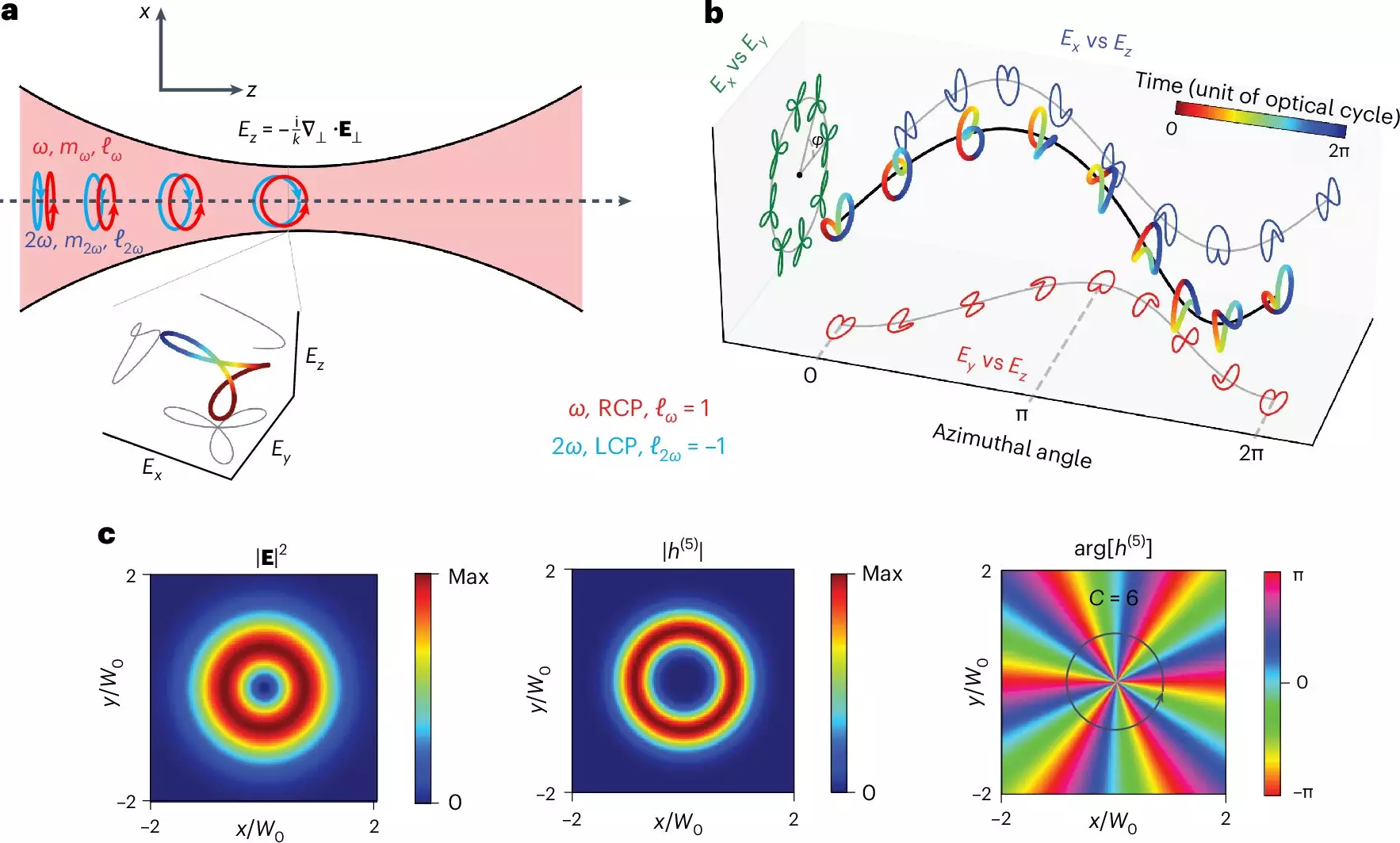In a recent publication in Nature Photonics, researchers from King’s College London and the Max Born Institute have introduced a groundbreaking development in photon structure, which stands to revolutionize the measurement of chirality in molecules. This new light structure, referred to as a “chiral vortex,” allows for more accurate and robust measurements of molecular chirality, a property crucial for various scientific domains, particularly in pharmacology. By generating a chiral curve that shifts over time and exhibits varying shapes at different spatial locations, this innovative technique promises significant implications for the pharmaceutical industry and beyond.
Chirality refers to the asymmetrical property of molecules where certain compounds can exist in two mirror-image forms, akin to human hands. These isomers—commonly identified as “right-handed” and “left-handed”—play a vital role in how molecules interact within biological systems. For instance, the notorious case of thalidomide in the 1950s underscores the lethal consequences of overlooking chirality. Administered to pregnant women to alleviate morning sickness, the racemic mixture of thalidomide failed to account for the dangerous effects of its right-handed variant, leading to thousands of severe birth defects. This incident highlights the need to develop sophisticated methods for determining chirality before drug compounds reach consumers. Thus, advances such as the chiral vortex could be pivotal in averting similar medical tragedies in the future.
Traditional Methods and Their Limitations
Currently, optical methods are common for chirality detection as they offer a less invasive and simpler approach compared to chemical techniques. However, these traditional methods often require large sample sizes, making them both costly and less efficient. Relying on the weak magnetic fields generated by light, conventional practices struggle to provide accurate measurements of molecular handedness, especially when samples contain near-equal amounts of both isomers. This presents a significant challenge for chemists and drug developers, who must identify subtle variations in molecular composition to ensure safety and efficacy.
The Chiral Vortex Mechanism
The newly developed chiral vortex operates by tracing out a chiral curve that evolves over time, introducing a spatial variation in handedness. When chiral molecules interact with this vortex, they emit photons in a distinguishable and recognizable pattern through a process known as high-harmonic generation. The beauty of this system lies in its inherent ability to detect even minimal deviations in the concentration of right- or left-handed molecules. Dr. Nicola Mayer, a key researcher in the study, emphasized that their approach could identify suitable differences in samples with nearly balanced chirality, such as a mixture containing 49% right-handed and 51% left-handed isomers—an imperceptible difference that could dramatically impact patient outcomes.
One of the remarkable qualities of the chiral vortex technique is its robustness against typical laboratory challenges that affect chirality experiments, such as variations in light intensity. This reliability increases its accessibility and reproducibility, empowering a wider range of researchers to utilize the method in their work. By enabling more precise detection of molecular handedness and unveiling insights into electron dynamics within molecules, the innovation not only aids in safer pharmaceutical development but could also pave the way for a comprehensive understanding of chemical interactions facilitated by light.
Future Applications and Implications for Quantum Computing
Looking ahead, the potential applications of the chiral vortex extend beyond traditional measurements, encompassing fields such as quantum computing. Researchers anticipate that this new light structure could enhance the processing capabilities of quantum bits (qubits) by endowing them with unique handedness properties, effectively encoding binary information in a manner that increases data storage and processing efficiency. As we venture into the quantum realm, harnessing the properties of chirality could unlock unprecedented computational power.
The advent of the chiral vortex represents a crucial leap forward in the detection and understanding of molecular chirality. With its ability to measure disparities in molecular handedness accurately and robustly, this innovation holds transformative potential for pharmaceutical applications, driving us closer to a future where drugs can be developed with unparalleled safety and efficacy. The broader implications for fields such as quantum computing further signal the promise of this research, igniting excitement for ongoing advancements that could reshape our approach to numerous scientific challenges. As such, the chiral vortex stands not merely as a novel phenomenon in optics but as a beacon of hope for the pursuit of knowledge in molecular science.

